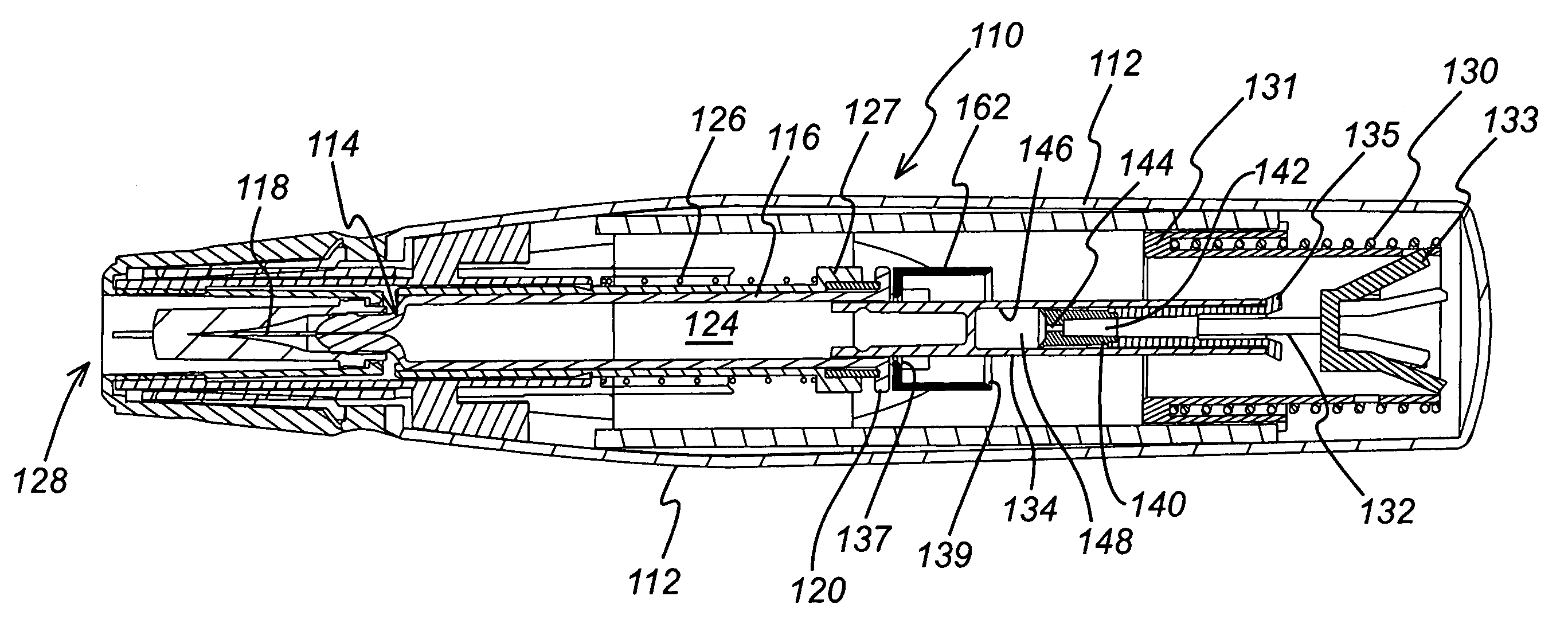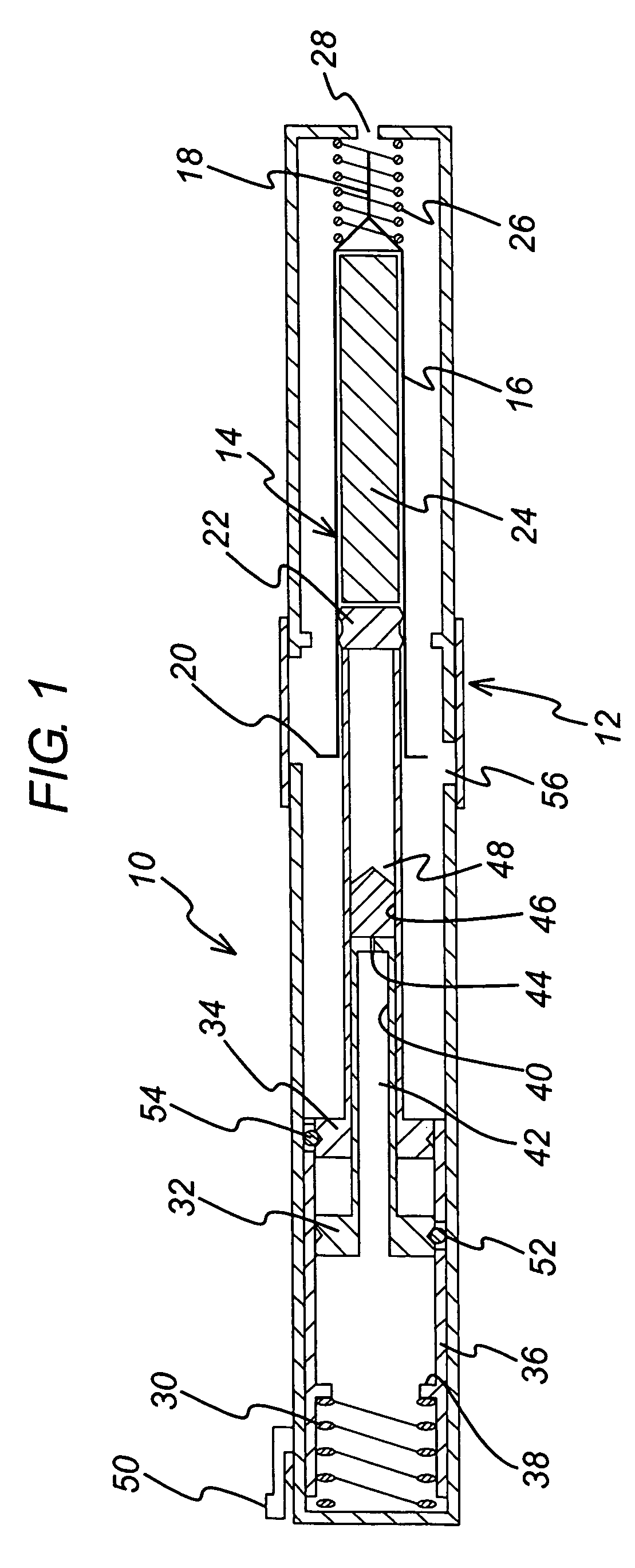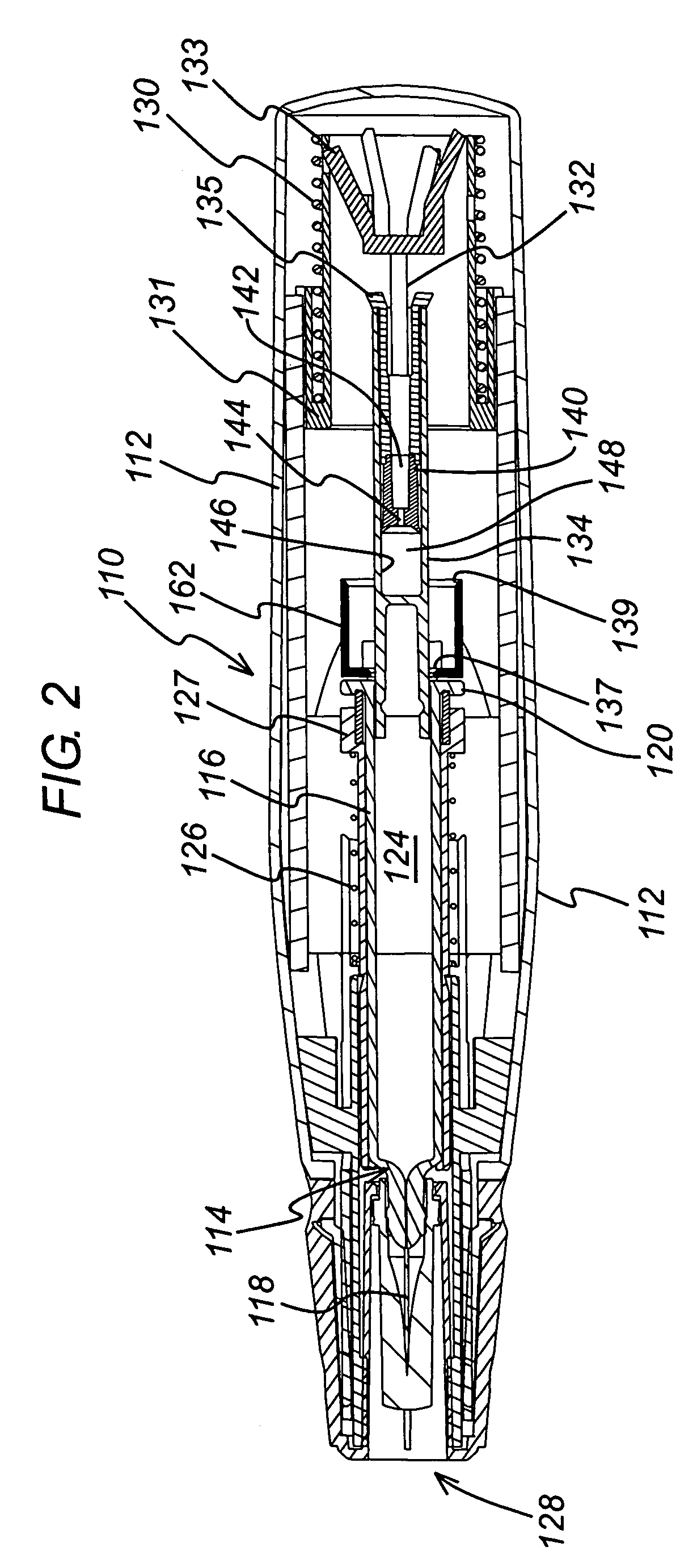Injection device
a technology of injection device and drive spring, which is applied in the direction of intravenous device, automatic syringe, infusion needle, etc., can solve the problems of unsatisfactory device that is supposed to retract, failure of the release mechanism to operate, and difficulty in ensuring both the complete discharge of syringe contents and the reliable release of syringe from the drive spring. , to achieve the effect of reducing the volume of the reservoir, and reducing the component coun
- Summary
- Abstract
- Description
- Claims
- Application Information
AI Technical Summary
Benefits of technology
Problems solved by technology
Method used
Image
Examples
Embodiment Construction
[0039]FIG. 1 shows an injection device 10 in which a housing 12 contains a hypodermic syringe 14. The syringe 14 is of conventional type, including a syringe body 16 terminating at one end in a hypodermic needle 18 and at the other in a flange 20, and a rubber bung 22 that constrains a drug 24 to be administered within the syringe body 16. The conventional plunger that would normally be connected to the bung 22 and used to discharge the contents of the syringe 14 manually has been removed and replaced with a drive element as will be described below. Whilst the syringe illustrated is of hypodermic type, this need not necessarily be so. Transcutaneous or ballistic dermal and subcutaneous syringes may also be used with the injection device of the present invention. Generally, the syringe must include a discharge nozzle, which in a hypodermic syringe is the needle 18. As illustrated, the housing includes a return spring 26 that biases the syringe 14 from an extended position in which th...
PUM
 Login to View More
Login to View More Abstract
Description
Claims
Application Information
 Login to View More
Login to View More - R&D
- Intellectual Property
- Life Sciences
- Materials
- Tech Scout
- Unparalleled Data Quality
- Higher Quality Content
- 60% Fewer Hallucinations
Browse by: Latest US Patents, China's latest patents, Technical Efficacy Thesaurus, Application Domain, Technology Topic, Popular Technical Reports.
© 2025 PatSnap. All rights reserved.Legal|Privacy policy|Modern Slavery Act Transparency Statement|Sitemap|About US| Contact US: help@patsnap.com



